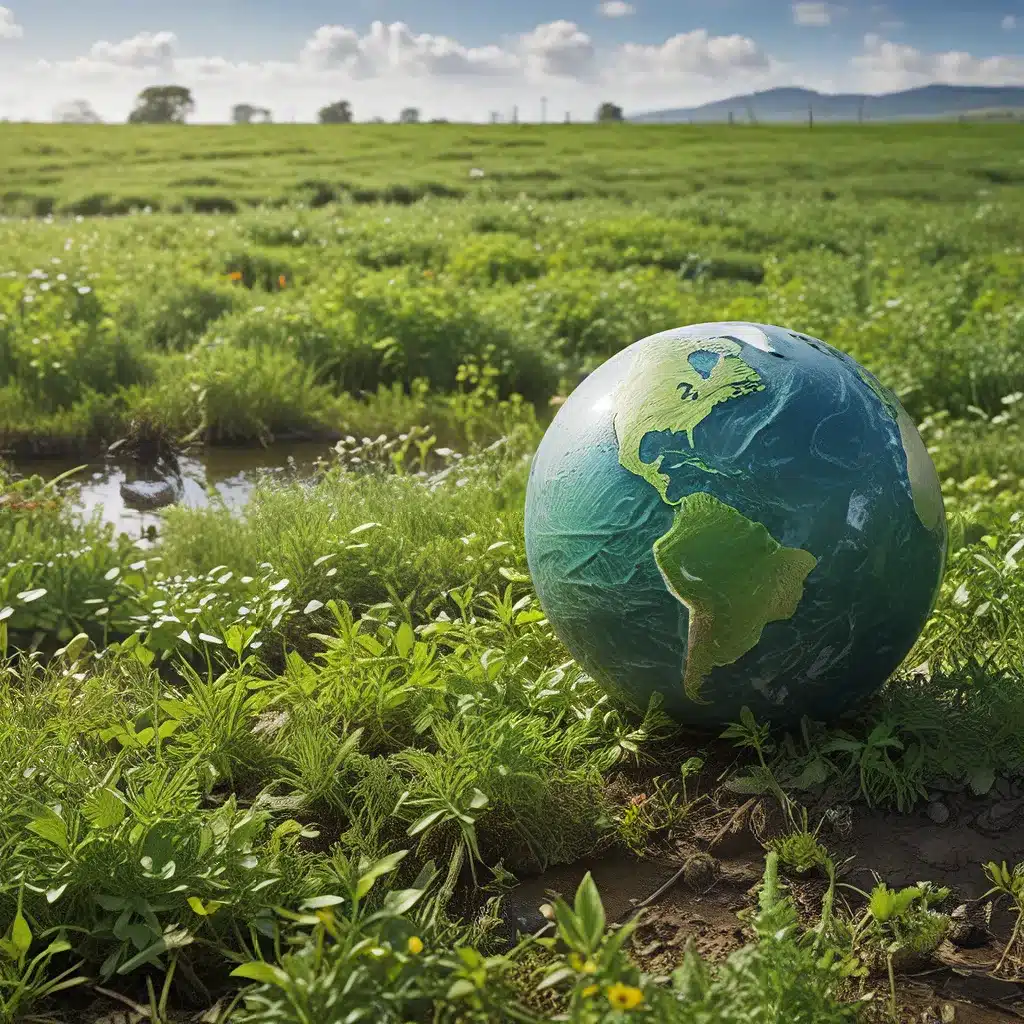
Driving Sustainability: Innovative Approaches to Environmental Services
Alright, folks, buckle up because we’re about to embark on a journey towards a greener, more sustainable future. As the old saying goes, “necessity is the mother of invention,” and let me tell you, there’s no shortage of necessities when it comes to environmental services these days.
Embracing the Power of Technology
You know, I used to think that technology was just a bunch of gadgets and gizmos that made our lives more complicated. But let me tell you, the advancements in technology have been a total game-changer when it comes to sustainability. Take Google, for instance – they’ve been leading the charge in using artificial intelligence (AI) to help individuals, cities, and partners reduce their carbon footprint.
Google’s innovative efforts include features like fuel-efficient routing in Google Maps, which can help drivers find the most eco-friendly route and save on emissions. And get this – their AI-powered predictions have already helped enable more than 29 million metric tons of greenhouse gas emissions reductions, which is the equivalent of taking 650,000 fuel-based cars off the road for a year. Crazy, right?
But it’s not just transportation where technology is making a difference. Google’s also using AI to accelerate research and design of climate change solutions, from mitigating the impact to adapting and building a decarbonized world. And they’re not the only ones. Companies across the board are harnessing the power of tech to drive sustainability forward.
Innovating for a Healthier Planet
Take Philips, for example. As a leading health technology company, they’re on a mission to deliver more equitable and sustainable healthcare – and they’re doing it in some pretty innovative ways. Philips is embedding environmental sustainability into their innovation processes, using techniques like EcoDesign to create products that are more energy-efficient and use less resources.
But it’s not just about the products – Philips is also rethinking their business models to make healthcare more accessible and sustainable. They’re developing cloud-based and software solutions that allow for remote care delivery, which not only expands access but also reduces the carbon footprint associated with in-person appointments.
And get this – Philips is teaming up with partners like the Bill and Melinda Gates Foundation to develop AI-powered ultrasound technology that can help improve maternal care, especially for women in remote and underserved areas. Talk about using innovation to tackle some of the toughest challenges in healthcare and the environment.
Driving Sustainability in the Automotive Sector
But it’s not just tech giants and healthcare companies getting in on the sustainability action. The automotive industry is also stepping up its game. Take Toyota, for example. They’ve been leading the charge when it comes to environmental responsibility, and their efforts are seriously impressive.
One of the coolest things they’re doing is using hydrogen fuel cell technology to power their vehicles. Yep, you heard that right – hydrogen fuel cells, not gasoline. And get this, their hydrogen-powered vehicles produce zero direct emissions, which is a total game-changer for reducing the carbon footprint of the transportation sector.
But Toyota isn’t stopping there. They’re also working to reduce waste and increase recycling across their operations, from their manufacturing facilities to their dealerships. And get this – they’re even developing new ways to reuse and recycle the materials from end-of-life vehicles. Talk about a true commitment to the circular economy.
Collaboration is Key
You know, when it comes to driving sustainability, it’s not just about what individual companies are doing – it’s about the power of collaboration. And that’s something that companies like Google, Philips, and Toyota are really embracing.
Take Google, for example. They’re not just developing their own sustainability solutions – they’re also sharing their innovations and lessons learned with the world, to help accelerate the global transition to a carbon-free future. They’re even aiming to help individuals, cities, and partners collectively reduce 1 gigaton of their carbon equivalent emissions annually by 2030 – that’s like taking 650,000 fuel-based cars off the road for a year, every single year!
And Philips? They’re teaming up with healthcare providers, suppliers, and industry peers to scale sustainable practices and drive down the carbon footprint of the healthcare sector. They’re even working with local partners, governments, and communities to develop innovative solutions that expand access to care while also reducing environmental impact.
It’s all about harnessing the power of collaboration to drive real, meaningful change. And you know what they say, “two heads are better than one” – or in this case, hundreds of heads working together towards a common goal.
A Sustainable Future is Possible
You know, when I started researching this topic, I’ll admit, I was a little overwhelmed by the sheer scale of the challenges we’re facing when it comes to sustainability. But the more I dug into the innovative approaches that companies like Google, Philips, and Toyota are taking, the more hopeful I became.
Because here’s the thing, folks – a sustainable future isn’t just a pipe dream, it’s a very real possibility. And it’s thanks to the ingenuity, dedication, and collaboration of people and organizations who are committed to making it happen.
So, what can you do to be a part of this movement? Well, for starters, you can check out Inland Waters, a company that’s at the forefront of innovative environmental services. From water treatment to sustainability consulting, they’re helping businesses and communities navigate the path towards a greener, more sustainable future.
But more than that, you can keep an open mind, stay curious, and be willing to embrace the change that’s happening all around us. Because the truth is, we’re all in this together – and the more we work together, the more we can accomplish.
So, let’s roll up our sleeves, get creative, and show the world that a sustainable future is not only possible, but inevitable. After all, as they say, “where there’s a will, there’s a way” – and let me tell you, there’s a whole lot of will out there.


